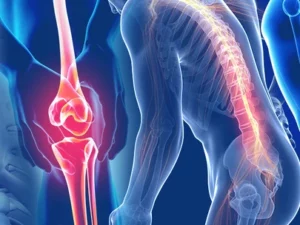Do you wake up every night, thanks to your own loud snores? Do you feel tired throughout the day? Do you often fall asleep during an interesting lecture or meeting? Then my friend, you could be possibly be suffering from sleep apnoea.
Snoring is a very common thing and occurs due to the vibration of the tissues at the back of the throat while sleeping. It usually does not indicate a serious problem. If it’s mild, then it doesn’t require treatment. However, some patients may have significant obstruction to airflow during sleep and this can indicate obstructive sleep apnoea. It requires detailed evaluation and treatment. Snoring and sleep apnoea usually affects middle aged to older men who are overweight. But this is not necessarily the case and can also affect women and children as well. Obstructive sleep apnoea can range in severity from mild to life threatening disease.
During Sleep
- The muscles of the tongue and the throat relax.
- The lower jaw and the tongue fall backward towards the throat.
- The airway becomes blocked due to the collapse of tissues in the throat.
These result in stoppage of breathing and the silence ends abruptly with a loud cough or gasp. The patient then wakes up briefly and begins breathing again and then drifts back to sleep. Once the patient falls asleep, the muscles relax again, the airway gets blocked and the whole process repeats again. This can happen a few hundred times throughout the night. Though, the patient does not remember these multiple episodes of awakening at night, they significantly impact the quality of life of a patient. The patient often wakes up feeling drowsy and feels that he or she haven’t had sleep at all at night. This in turn leads to lack of concentration and irritability.
Children with obstructive Sleep apnoea are often hyperactive during the daytime. Obstructive Sleep Apnoea is also associated with Heart disease, Diabetes and Hypertension. Obstructive Sleep apnoea is diagnosed after detailed history and evaluation which aims at determining the effect that lack of sleep has on your daily routine. The upper airways are evaluated for crowding of tissues. An Endoscopy is usually done either when awake or by stimulating sleep called Drug Induced Sleep Endoscopy. Sleep Study or Polysomnography is done during sleep at night either in a hospital setting or at home. The patient’s heart and lung function, breathing movements are then monitored to determine the severity of Sleep apnoea, which is assessed according to certain parameters.
The management options for Sleep Apnoea are
- Lifestyle modification: losing weight, avoiding alcohol before bedtime, quitting cigarette smoking and avoiding sleeping on the back can help with reducing snoring and sleep apnea.
- Continuous Positive Airway Pressure (CPAP): This is a machine that uses air under pressure to keep the airway open. This is usually offered as the first line of treatment.
- Dental appliances: are used in to keep your jaw and tongue from falling backwards and keep the airway open.
- Surgery: Surgical options are usually advised for patients with severe sleep apnea and include surgical options to reduce the tissues in the throat and back of the throat.
So if you think you or your partner have snoring or sleep apnea, please consult a Doctor immediately. Your problem has a solution. Breathe easy. Sleep breezy




